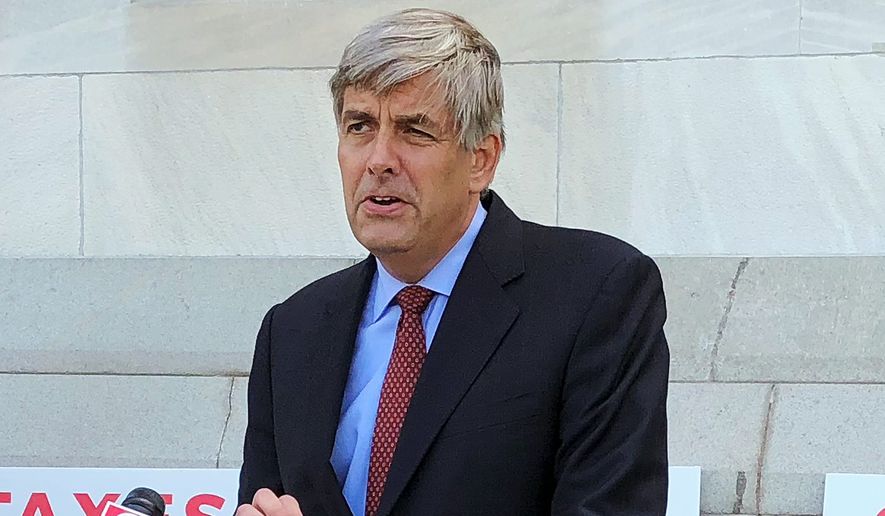It’s not usually thought of as GOP territory, but New England could prove a firewall of sorts for Republican governors in next week’s elections, with a potential pickup in Connecticut and a chance to defend governorships in other states.
The Republican Party entered the election season with a chance to win governor’s offices in all six states. Rhode Island has since slipped as a prospect, but they’re considered locks to hold Massachusetts and Vermont, and are favored in New Hampshire. Maine is anyone’s guess.
The biggest fight is in Connecticut, where businessman Bob Stefanowski is trying to give the GOP its first win in a governor’s race in more than a decade, facing off against Democrat Ned Lamont.
They’re looking to replace Gov. Dannel Malloy, a Democrat who defeated Mr. Lamont in a primary in 2010 but who has seen his approval ratings careen into the teens in some surveys amid state budget woes. He decided not to seek a third term.
“This was nationally one of the places where the Republicans really thought they had a good chance of switching a Democratic governorship to a Republican governorship,” said Ronald Schurin, a political-science professor at the University of Connecticut.
The Republican Governors Association has spent about $5 million so far in the state, and will continue to spend and run TV ads through Election Day, said Jon Thompson, a spokesman for the group.
“After eight years of Democrat Gov. Dan Malloy’s tax hikes and anti-jobs policies, Connecticut is desperate for change,” Mr. Thompson said. “Ned Lamont can only offer the same liberal policies that have failed the state so terribly under Malloy.”
A recent Sacred Heart University poll showed that about 40 percent of likely voters plan to support Mr. Lamont, compared to 36 percent who favor Mr. Stefanowski and 8 percent who back independent candidate Oz Griebel.
Mr. Malloy had an anemic 15 percent approval rating in the poll.
Mr. Lamont is trying to keep the taint of Mr. Malloy from infecting his own campaign.
“I’m my own man. I took on Dan Malloy eight years ago. I challenged him. I didn’t think he was going to make the big changes we needed to do,” the Democratic nominee said in a recent interview with Connecticut Public Radio.
Mr. Lamont gained notoriety when he defeated former Sen. Joseph Lieberman in a 2006 Democratic primary, only to see Mr. Lieberman run as an independent and retain the seat.
Though the state has gone blue in every presidential election since 1992, Republicans have had a decent track record in statewide races. Mr. Malloy was actually the first Democrat elected governor since 1986.
Now, with Mr. Malloy struggling, Democrats are hoping to make themselves the lesser of two evils, running firmly against a GOP with President Trump at its helm nationally.
They were aided in that when Mr. Stefanowski earlier this year said Mr. Trump deserved an “A” grade for his job performance.
“This is a race where Republicans are struggling because they have a candidate who tied himself so closely to Trump,” said Jared Leopold, a spokesman for the Democratic Governors Association.
Republicans control 33 governorships in the country to Democrats’ 16. Twenty-six GOP seats are up this year, compared to nine for the Democrats, leaving Republicans with fewer opportunities to go on offense.
Republican Govs. Charlie Baker in Massachusetts and Phil Scott in Vermont are considered fairly easy holds for the GOP, and Chris Sununu is leading in New Hampshire, prognosticators say.
“Republicans in New England have had a track record of success in governor’s races even as they states typically go blue in presidential years, said Kyle Kondik, managing editor of “Sabato’s Crystal Ball,” a political forecasting newsletter.
Mr. Kondik said New England Republicans like Mr. Baker and Mr. Scott have run as moderates on social issues, notably abortion.
“If Republicans can take such issues off the table, they can present themselves as moderates and potential counterweights to Democratic state legislatures,” he said.
In Massachusetts, voters appear prepared to re-elect Mr. Baker at the same time that they’ll elect Sen. Elizabeth Warren to a second term in the U.S. Senate. That suggests a lot of ticket-splitting voters.
“Of all places, Massachusetts seems immune to some of the partisan and ideological purity tests sweeping the country,” said John Cluverius, a political-science professor at University of Massachusetts at Lowell. “Baker and Warren are both incumbents in good economic times and they have both been public in their criticism of the president’s policies that Massachusetts voters dislike.”
Democrats’ brightest spot in New England is Rhode Island, where Gov. Gina Raimondo, who had seemed vulnerable earlier in the cycle, has now put some distance between herself and Republican Allan Fung in a rematch of the 2014 governor’s race.
And then there’s Maine, where GOP Gov. Paul LePage, a firm Trump supporter, is term-limited. Democrats hope their nominee, Janet Mills, can overcome Republican Shawn Moody and two independent candidates. She has led in polling this fall.
• David Sherfinski can be reached at dsherfinski@washingtontimes.com.




Please read our comment policy before commenting.